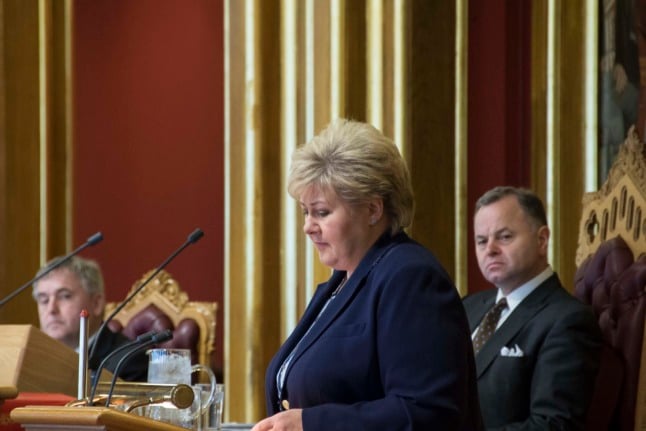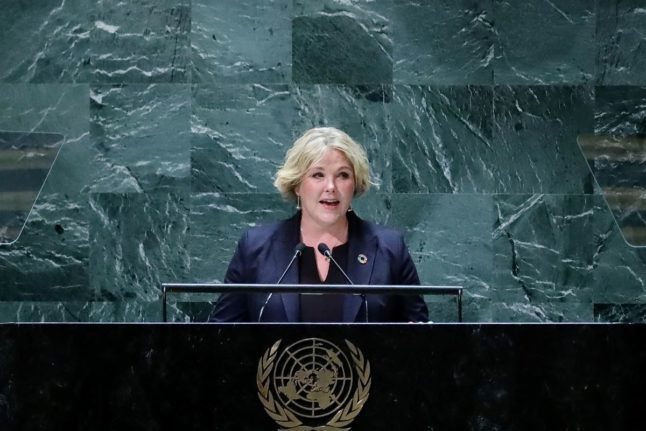Voters cast their decision on who should be in Norway’s next government.
Currently, it looks like a new government is on the cards after eight years of right-wing rule led by the Conservative Party’s Erna Solberg.
Labour leader Jonas Gahr Støre is the man tipped by the polls and commentators to take over the hot seat and form a “red-green” coalition. Below, we’ll take a look at what the polls are looking like and what’s likely to happen.
If you want to catch up on our election coverage, whether its our jargon-busting vocabulary guide or everything you need to know about the parties you can click here.
What do the polls say?
Below we’ve put a chart together using data from TV2/Kantars latest opinion poll. You can use the chart to see what percentage of votes the parties are predicted to get, how many MPs the parties are projected to have elected, and how this compares to the 2017 election.
What does this all mean?
In short, this means that Jonas Gahr Støre is still on course to become Norway’s next PM. However, Labour’s dreams of securing a majority coalition with the Centre Party and Socialist Left Party appears to be in the balance. Instead, they may potentially be dependent on either the Red Party or Green Party to get into government. TV2’s latest poll gives Labour’s preferred coalition a predicted slim majority of 86.
For Erna Solberg and the Conservatives, it’s bad news. The party appears to be losing voters and potential seats to both the Centre Party and the Liberals. In addition, potential coalition partners, the Christian Democrats and Progress Party, have seen a significant dip in support since the last election. In contrast, the parties on the left have gained support.

“With both centre parties over the limit, the governing parties potential of being reelected is greatly reduced,” election analyst Terje Sørensen told TV2.
Voters have also been migrating from the Conservatives to Labour, which should get Støre’s party over the line come election day.
“As long as this doesn’t change, then Labour’s chances still seem solid,” Sørensen said.
For the Centre Party, there’s both good news and bad news. The good news is that it looks like support is stabilising, following a collapse in August. The bad news is that their dream of governing with just themselves and Labour seems dead in the water, and they will have to accept the support of other parties to govern.
Will Labour, the Centre Party and Socialist Left Party be able to form a majority?
Labour are on course to return their worst individual results since 1924. Despite this, Labour, the Socialist Left Party and Centre Party are still on the path to form a majority government by the finest of margins.
Should Labour’s preferred combination drop seats compared to the polls predictions, they may depend on either or both the Red Party and Green Party to secure a majority.
Labour deputy leader Hadia Tajik has said the party hasn’t been happy with recent poll results and told newspaper VG that its main aim is to secure a majority with its preferred coalition.
“We have higher ambitions than this and will work hard to show that a Labour-led government will prioritise work for all and a welfare state that does not depend on where you live or the size of your wallet. The Labour Party aims to sit in government with the Socialist Left Party and the Centre Party. It is our ambition to get a majority with them,” Tajik told the newspaper.
Interestingly, Støre’s hopes of becoming PM will be boosted if the Red Party and Green Party fail to meet the four percent levelling seats threshold. This means the two parties will be awarded less seats through the levelling system which rewards parties that win a lot of votes nationwide, but not many seats outright.
“For Støre, everything will be much easier if two or three of the parties fighting against the barrier fall below it,” Sørensen explained.
This would transfer more seats to Labour and their mooted coalition partners. If both the Red Party and Green Party over-perform and meet the threshold, Labour would need to broker deals with them to secure a majority, or the support to form a government.



 Please whitelist us to continue reading.
Please whitelist us to continue reading.
Member comments